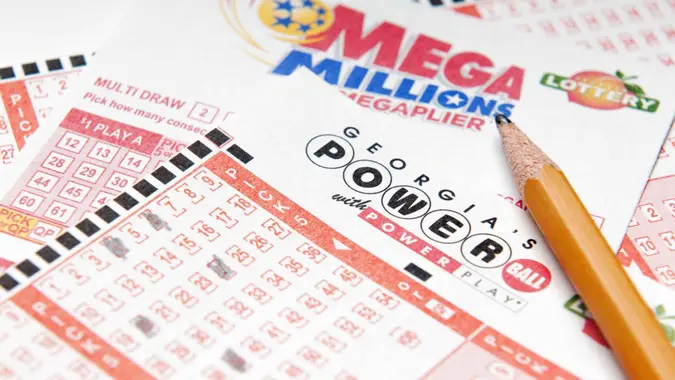Beware of This Toll Payment Scam: 3 Ways Scammers Trick You and What To Do

Commitment to Our Readers
GOBankingRates' editorial team is committed to bringing you unbiased reviews and information. We use data-driven methodologies to evaluate financial products and services - our reviews and ratings are not influenced by advertisers. You can read more about our editorial guidelines and our products and services review methodology.

20 Years
Helping You Live Richer

Reviewed
by Experts

Trusted by
Millions of Readers
Scammers are always finding new ways to try to take your money. There’s been a surge in unpaid toll text scams, according to Michael Scheumack, chief innovation officer of IdentityIQ.
“Our Fraud Restoration Center has experienced a 104% increase so far this year in members calling in about this scam,” he said. “The unpaid toll road text scam is a form of smishing (SMS phishing) where scammers send fake messages to trick you into providing personal and financial information. AI tools are making it easier for scammers to personalize these messages, create more deceptive fake websites and send them out in mass quantities at a faster rate. These targeted tactics can make it more difficult to spot a scam.”
Here are three ways toll payment scammers trick you and what to do if you fall victim.
Create a Sense of Urgency
Many of these toll scams create a sense of urgency to get you to react quickly.
“Unpaid toll text scam messages aim to pressure you to pay immediately to avoid late fees or legal action,” Scheumack said. “Scammers create a sense of urgency to try to trick you to act quickly without thinking.”
Include Personal Details
Scheumack pointed out that almost everyone has had their information exposed in a data breach at some point, and that can help scammers.
“So, scammers now have access to your personal details and can craft more convincing and targeted messages,” he said. “For unpaid toll road text scams, that means scammers have access to information such as your phone number and address, so they can create a fake text that looks like it comes from the toll agency in your area.”
Include Malicious Links
Scheumack explained that unpaid toll text scam messages often include a malicious link. “That link can lead to a fake payment portal designed to steal your credit card details, bank account information or other sensitive data,” he said.
He added that the fake link can download malware to your smartphone, which contains spyware that steals your personal information, including credit card information, bank account details, and usernames and passwords.
What To Do If You Receive a Suspicious Toll Payment Text
“Toll agencies will send you a letter if you have unpaid tolls,” Scheumack said. “They will not send you a text for payment. If you receive an unpaid toll text, do not click the link. You should contact the toll agency directly if you are unsure if you owe a fee.”
He added that you should report the text as junk on your phone and block the number. He also recommended to report the text to the Federal Trade Commission as a way to help authorities stop fraud.
What To Do If You Accidentally Click the Link
Remember: Toll agencies will send letters — not texts — to notify people of unpaid tolls.
However, if you happen to click on a scammer’s fake toll payment link and enter your credit card or other personal information, Scheumack said to act quickly.
“You should report the fraud to your credit card company or bank,” he said. “You should also monitor your identity and credit for possible suspicious activity. There are identity theft services that can alert you for possible fraud and other suspicious activity.”
 Written by
Written by  Edited by
Edited by 

























